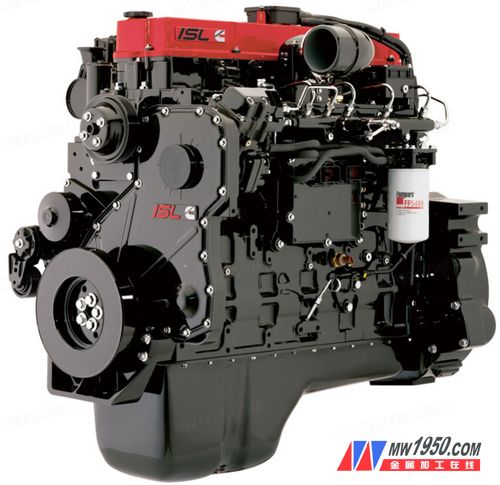Fault Diagnosis and Maintenance of Cummins L Series Electronic Control Diesel Engine
With the rapid growth of China's automotive industry, the environmental impact of vehicle exhaust has become increasingly severe. To address this issue, the government has implemented stringent emission standards. In the diesel engine sector, manufacturers are continuously adopting advanced technologies to enhance performance, improve fuel efficiency, and reduce emissions. Electronic control systems have become the core of these innovations. They use a variety of sensors to monitor engine conditions and process the data quickly, allowing precise control over fuel injection quantity, timing, and high-pressure rail fuel pressure. This ensures optimal fuel delivery and combustion. Based on the structural characteristics of the Cummins L-series electronically controlled diesel engine, this article outlines important precautions and scientific methods for diagnosing and troubleshooting faults in such engines.
**Cummins L-Series Electronically Controlled Diesel Engine**

*Cummins L Series Electronically Controlled Diesel Engine*
The Cummins L-series electronically controlled diesel engine is a mid-power engine specifically designed for the Chinese market. It offers a rated power range of 206–294 kW and maximum torque coverage from 1100 to 1700 N·m. It features the Cummins CCR high-pressure common rail fuel system, which delivers injection pressures up to 160 MPa. The injectors are BOSCH electronically controlled units capable of multiple injections, while the turbocharger uses the Cummins HX40W model with a wastegate. The electronic control module is based on the Motorola CM2150 platform. Through optimized in-cylinder technology, the high-pressure common rail system, and the SCR after-treatment system, the engine meets national IV or V emission standards. It can also be configured to meet national III standards upon customer request. Advanced noise reduction techniques keep the overall noise level below 95 dB(A). The engine supports constant speed control, remote throttle control, and includes protection features like cold start assistance, intake preheating, and high-altitude power correction. It is widely used in luxury buses, urban BRT systems, tractors, trucks, and special vehicles.
**Usage Guidelines**
Before repairing an L-series electronically controlled diesel engine, service personnel must hold the appropriate certification and understand its mechanical structure, working principles, and maintenance procedures. Proper operation and use should follow these guidelines:
1. **Power On/Off Procedures**: When turning on the engine, first switch on the vehicle’s main power, then turn the key to the ignition position. When turning off, first switch the key to “OFF,†wait 30 seconds, and then disconnect the main power. Failing to follow this sequence may generate fault code 1117, potentially damaging stored data or programs in the ECU, leading to further issues.
2. **Avoid Disconnecting Components During Operation**: Do not remove or install connectors for the ECU, sensors, or actuators while the ECU is active (key in “ON†position). These components are sensitive, and sudden disconnection can cause voltage spikes that may damage semiconductors, circuits, or contacts.
3. **Welding Precautions**: When welding on a vehicle equipped with an L-series engine, all ECU connectors must be removed, and the main power supply disconnected. Welding while the ECU is powered can lead to serious damage, including ECU failure, locking, or inability to start.
4. **Avoid Water Exposure**: Never directly rinse the engine with water. Instead, wipe the electronic section with a damp cloth or clean it with compressed air. Even small amounts of water under pressure can penetrate seals and cause signal distortion, operational failures, or component damage.
5. **Proper Battery Connection**: Ensure all ECU connectors are installed only after connecting the battery terminals. Incorrect installation during assembly or modification can cause damage due to accidental short circuits.
6. **Inspection Before Installation**: Check all connectors for foreign objects, moisture, rust, or damage before installation. Ensure they are securely connected and locked properly. Improper installation may damage the ECU.
7. **Electromagnetic Interference Protection**: Ground the ECU casing properly to the cylinder block. Use shielded cables for the throttle pedal and twisted pair wiring for the injectors as per the electrical installation manual. Failure to do so may result in static buildup, poor performance, or engine instability.
8. **Fuel System Cleanliness**: The fuel system requires high cleanliness. Contaminants like dust, dirt, or water can damage the high-pressure pump and injectors. Always clean the surrounding area when working on the fuel system. If a connection is not reinstalled immediately, cover it with a plastic plug. After shutdown, wait 10 minutes before removing high-pressure fuel lines, as the system remains under pressure. Never depressurize a hot engine.
Waterborne epoxy curing agent doesn't contain any solvent and auxiliary solvent, and easy to dilute with water. It can be widely used for various industrial coating or construction coating. Together with Waterborne Epoxy Emulsion, it provides brilliant performance for coating such as water resistance, salt spray resistance, anti-corrosion and improved mechanical properties on various substrate etc.
waterborne Epoxy hardener,epoxy hardener for coating,Epoxy curing agent for industrial coating,expoxy curing agent for paint,epoxy for flooring coating
Shanghai Na Long Tech Co., Ltd , https://www.na-long.com